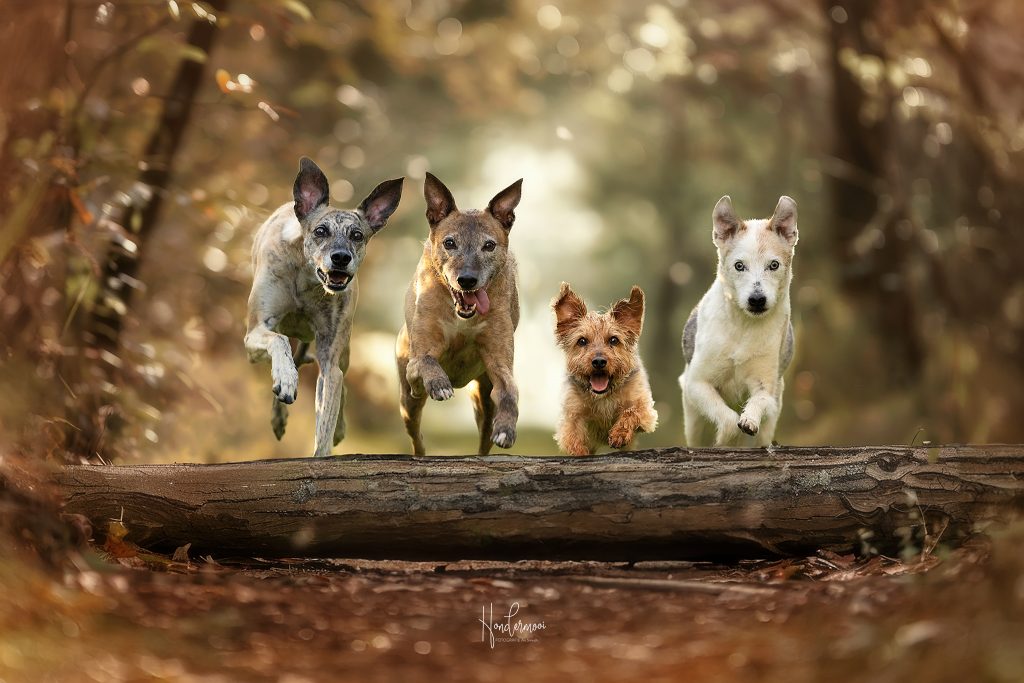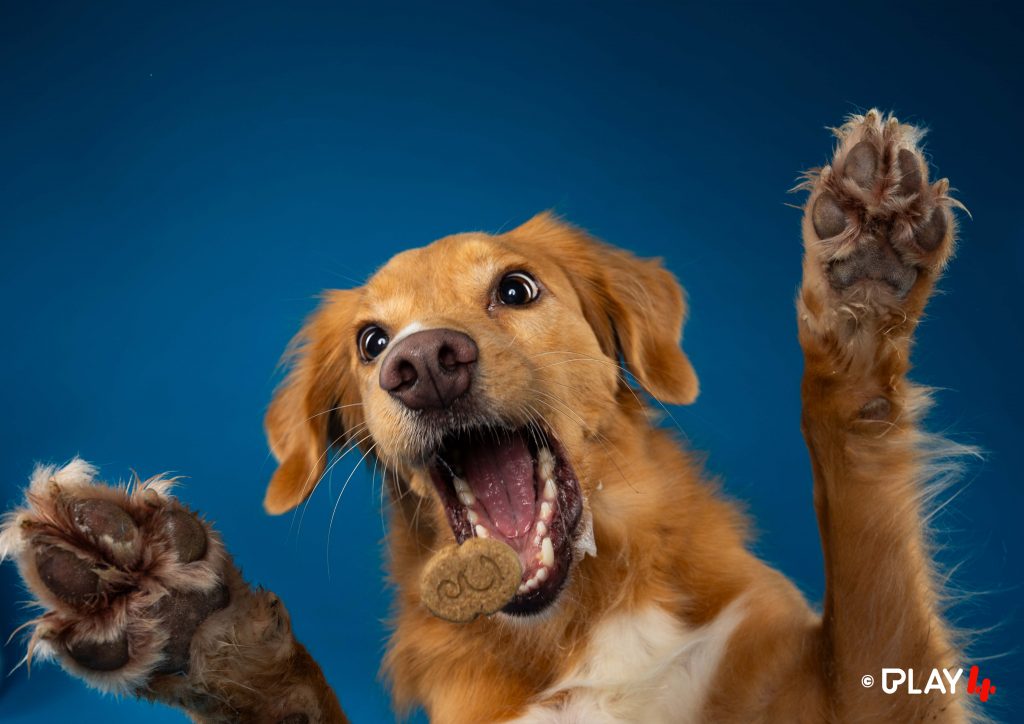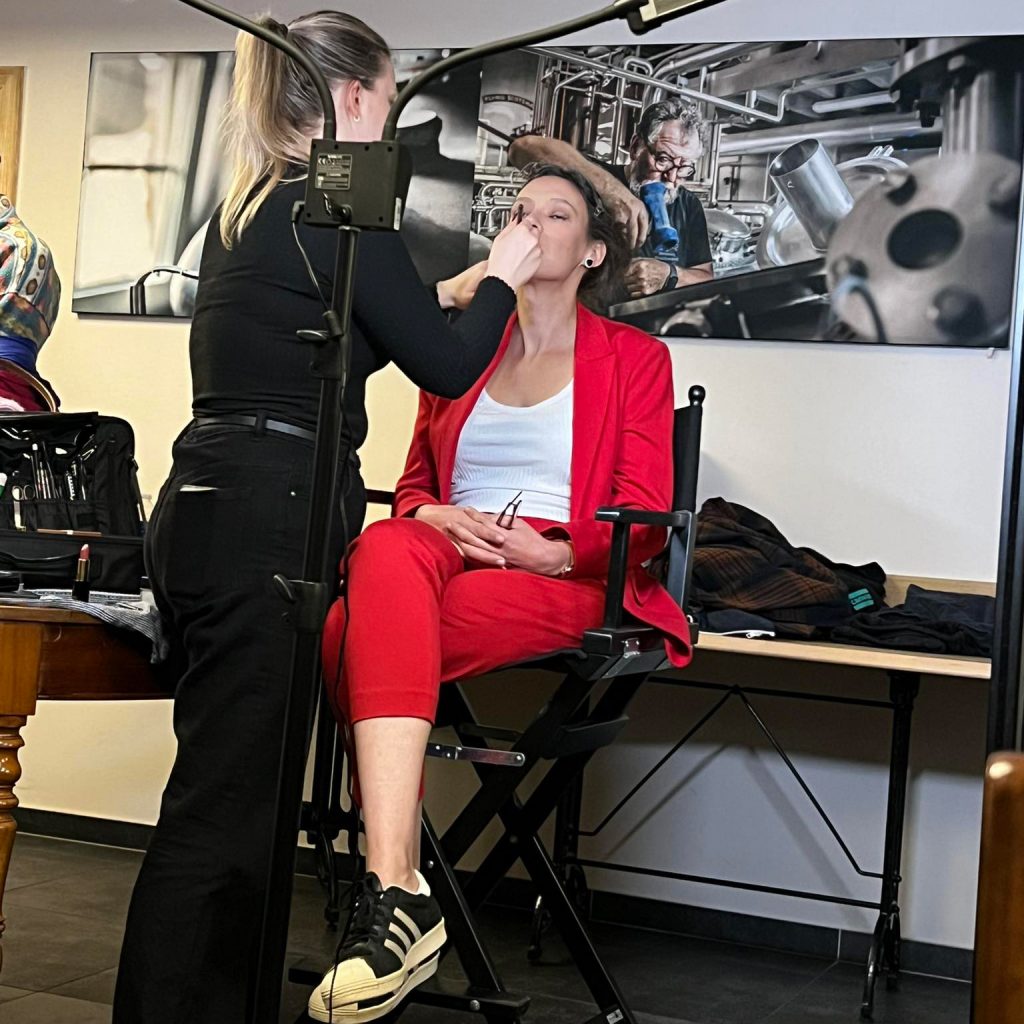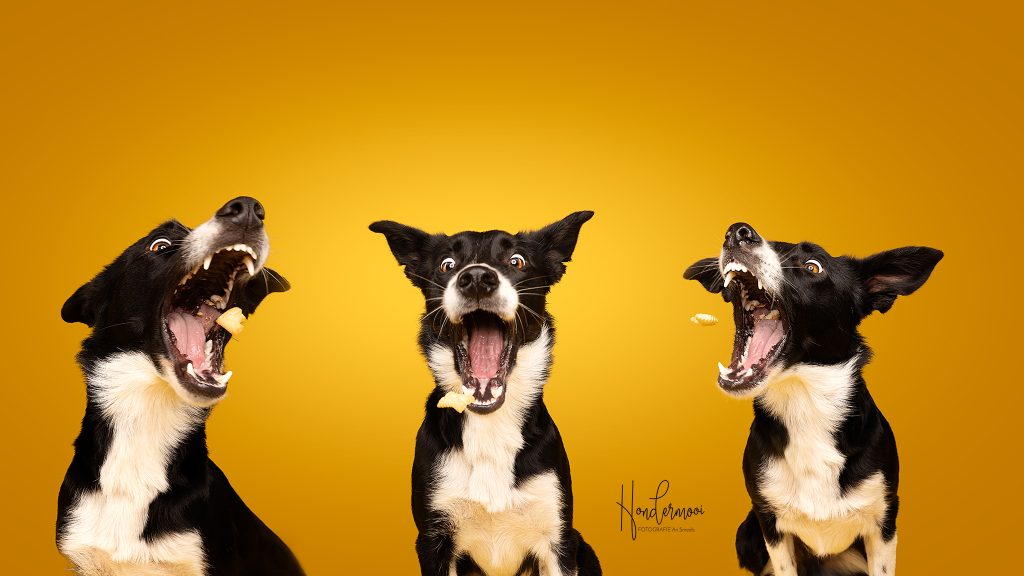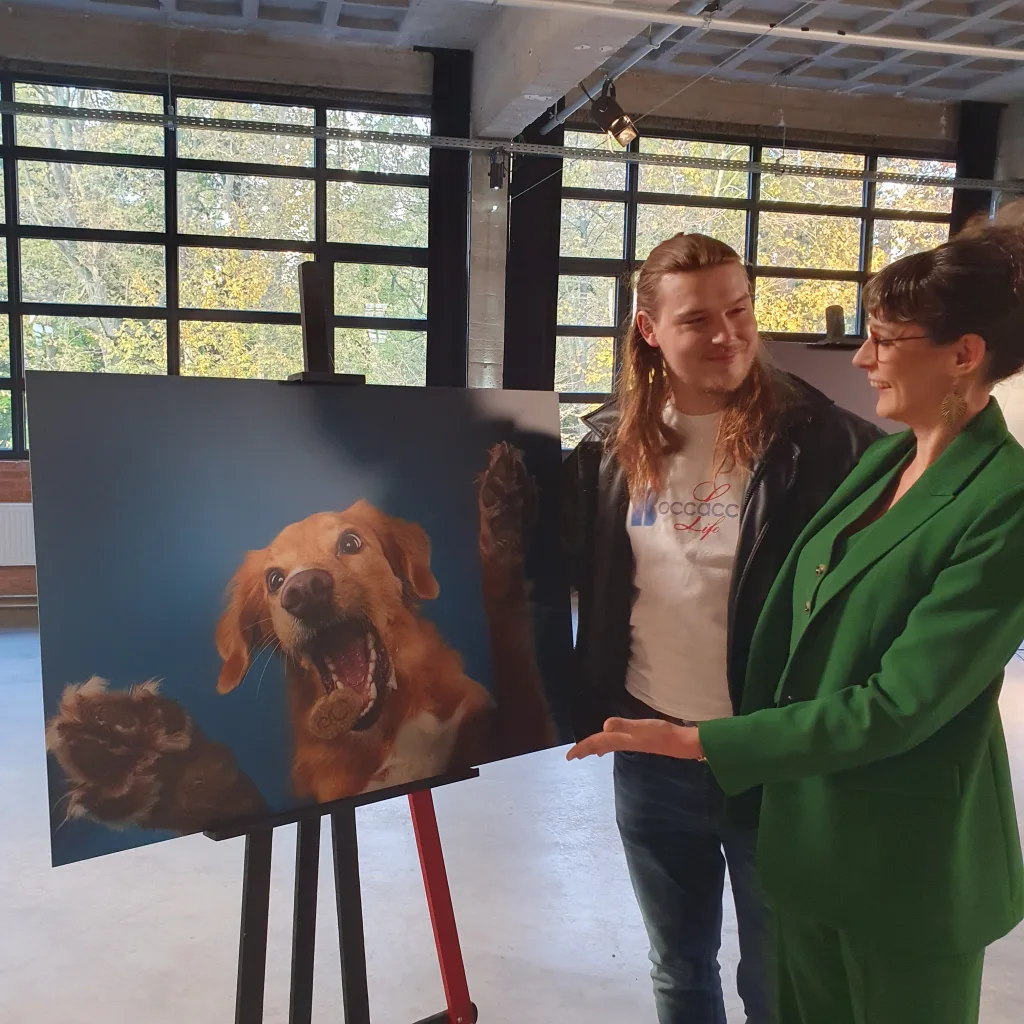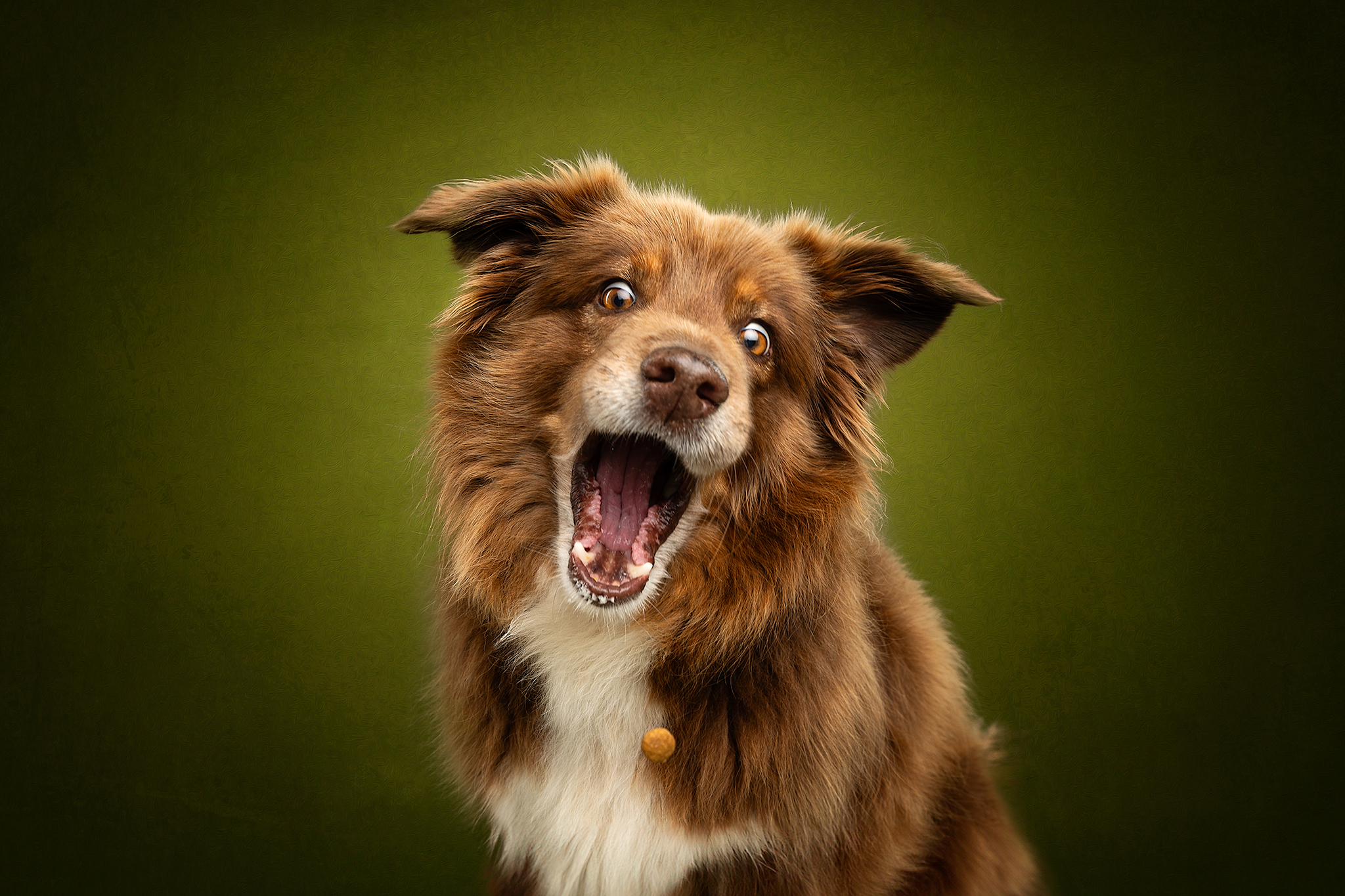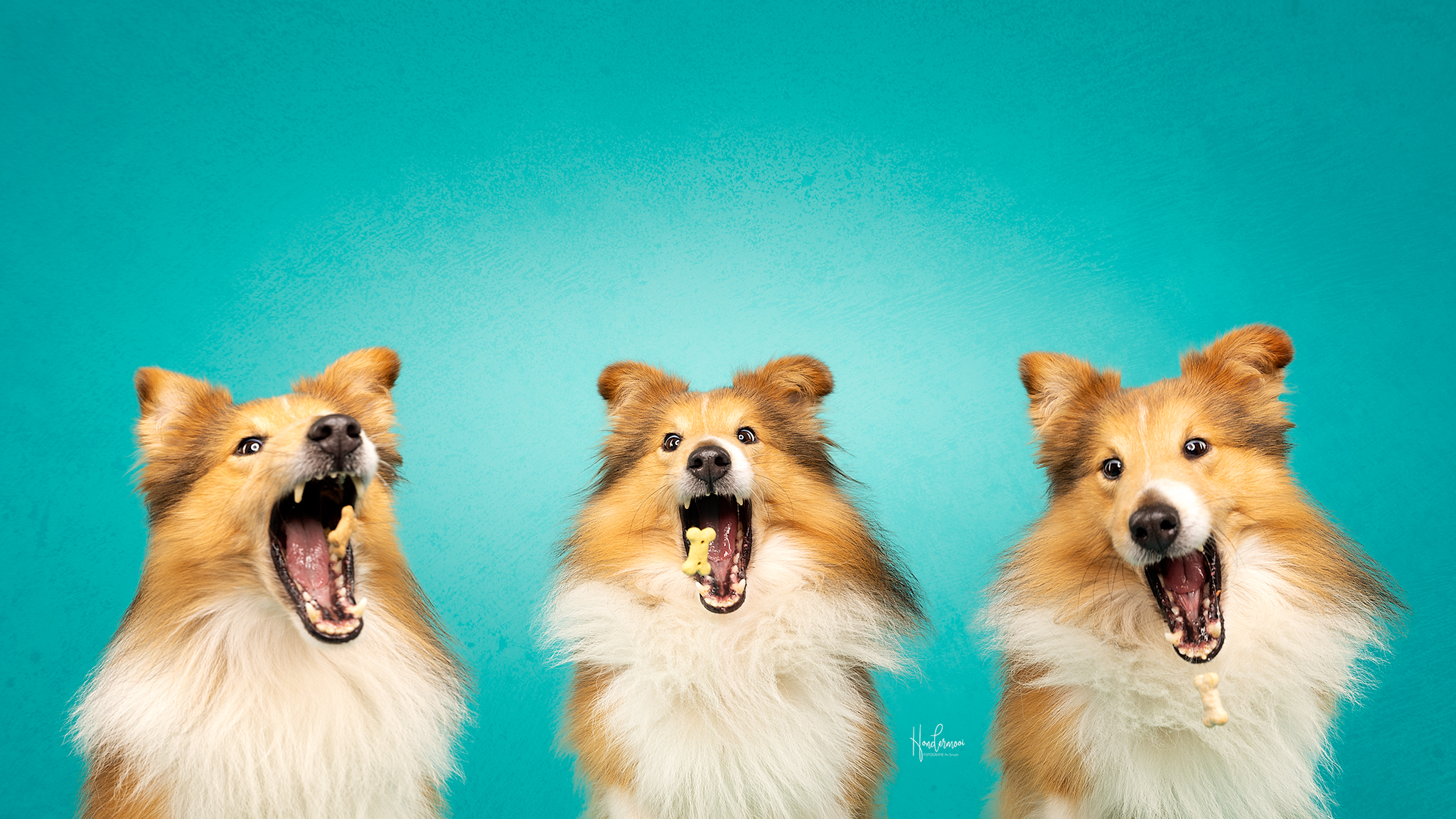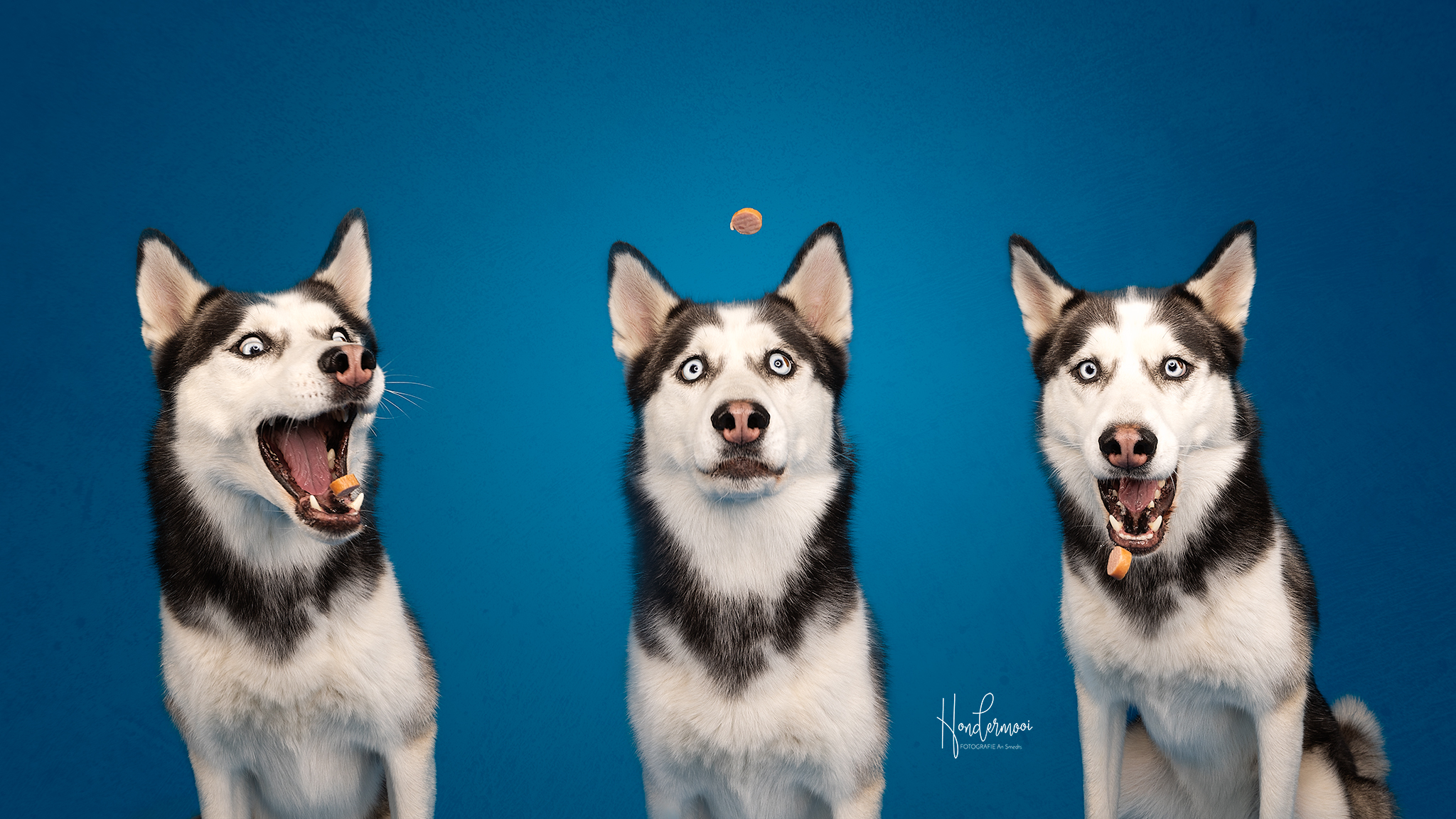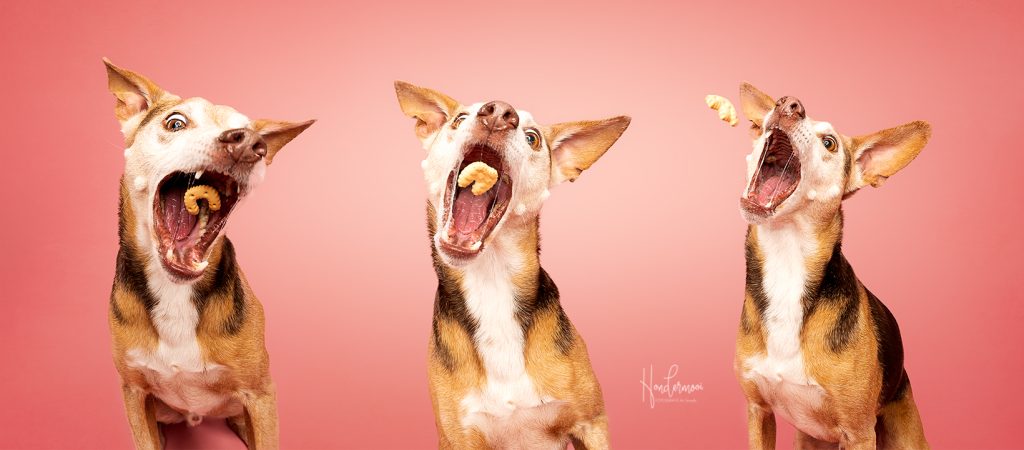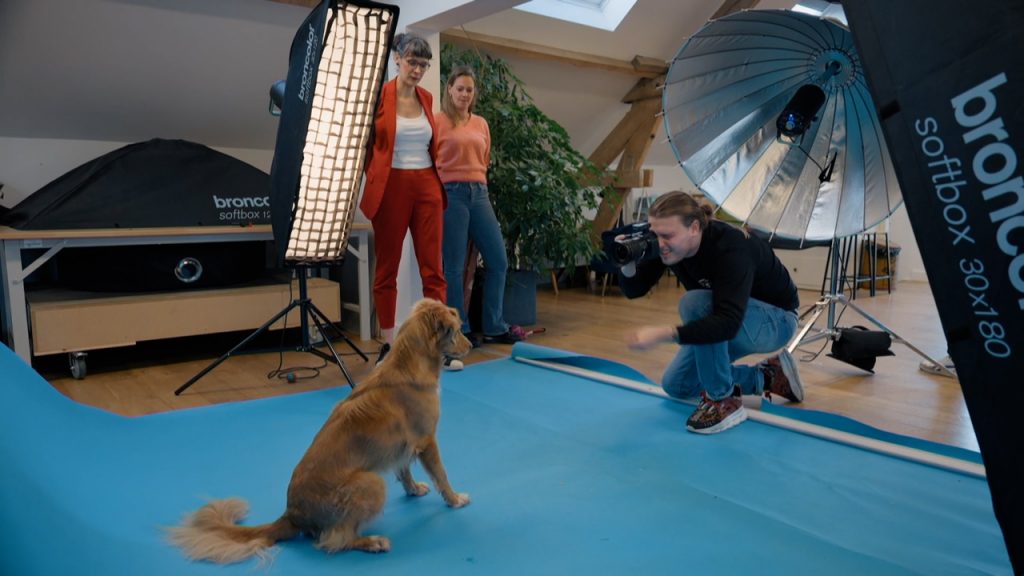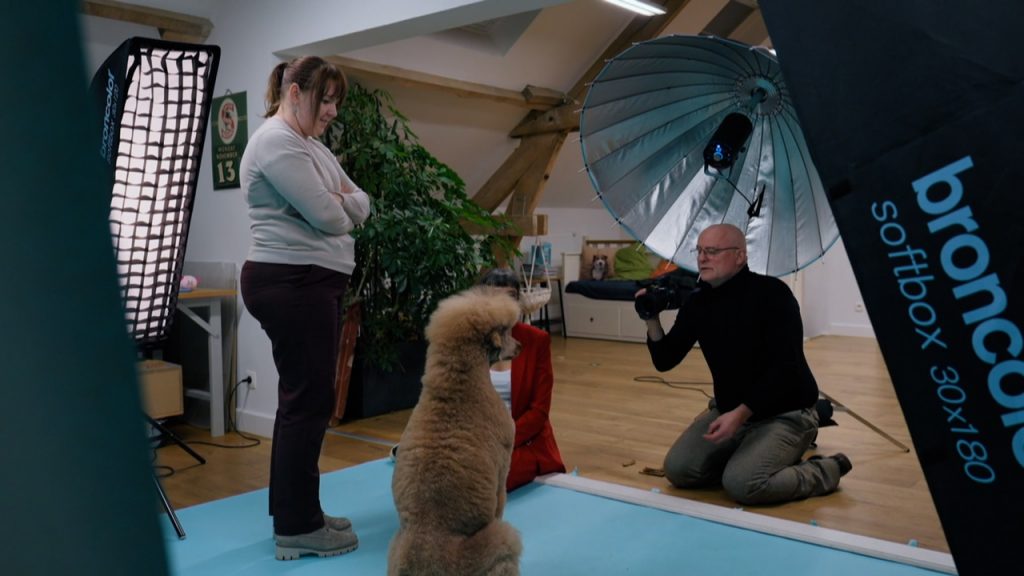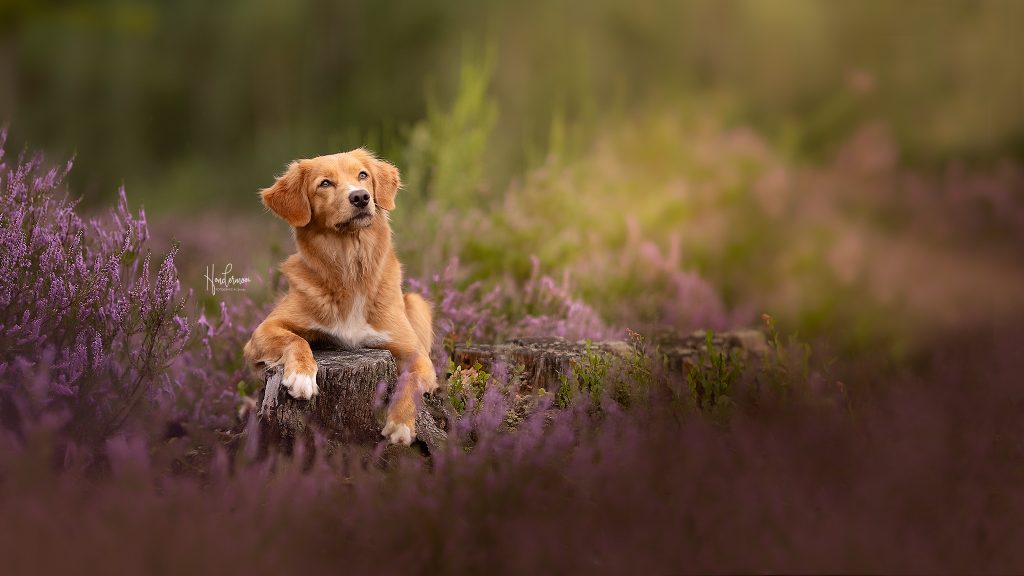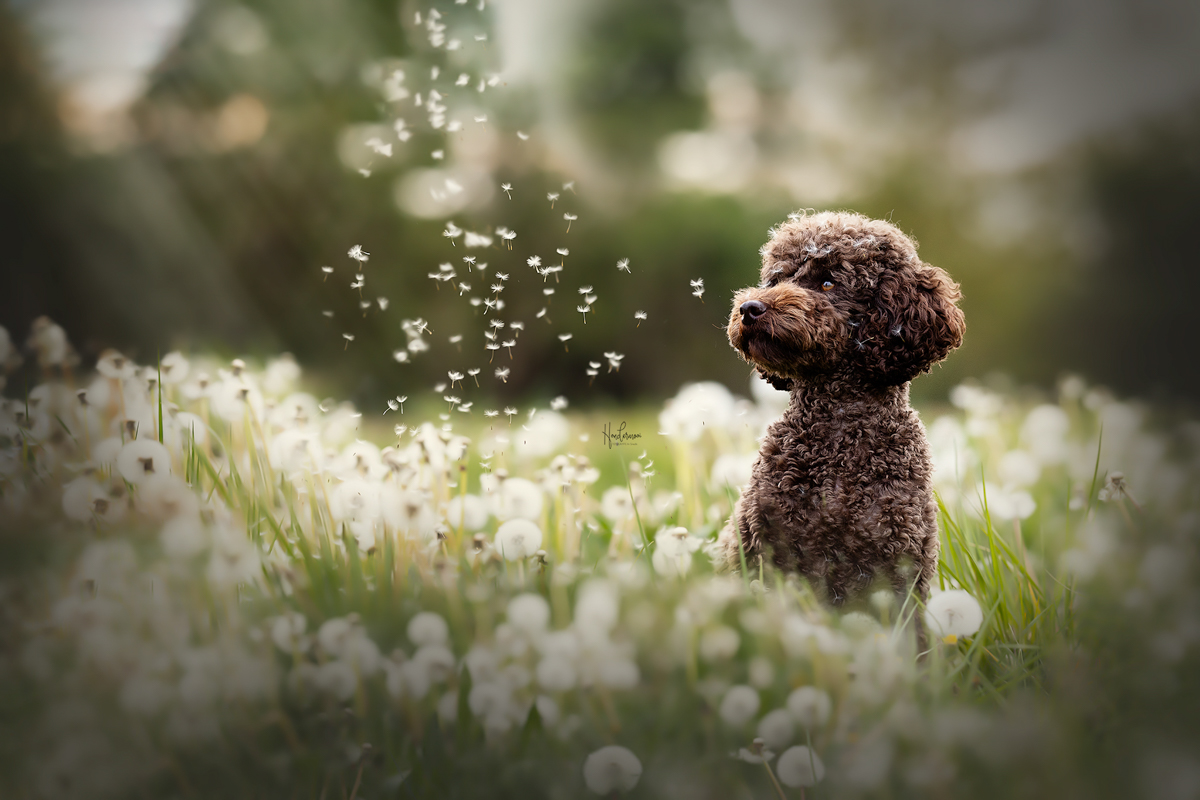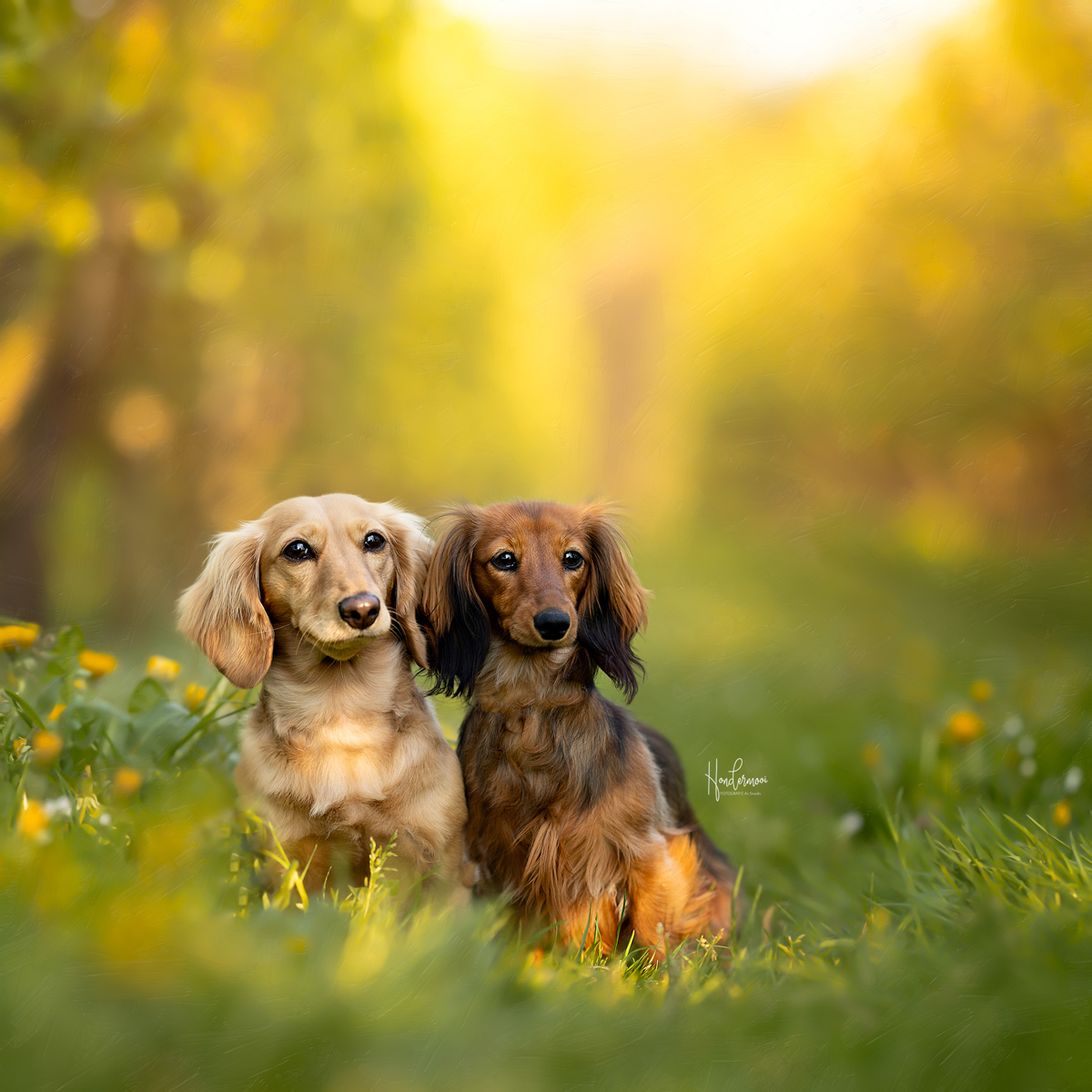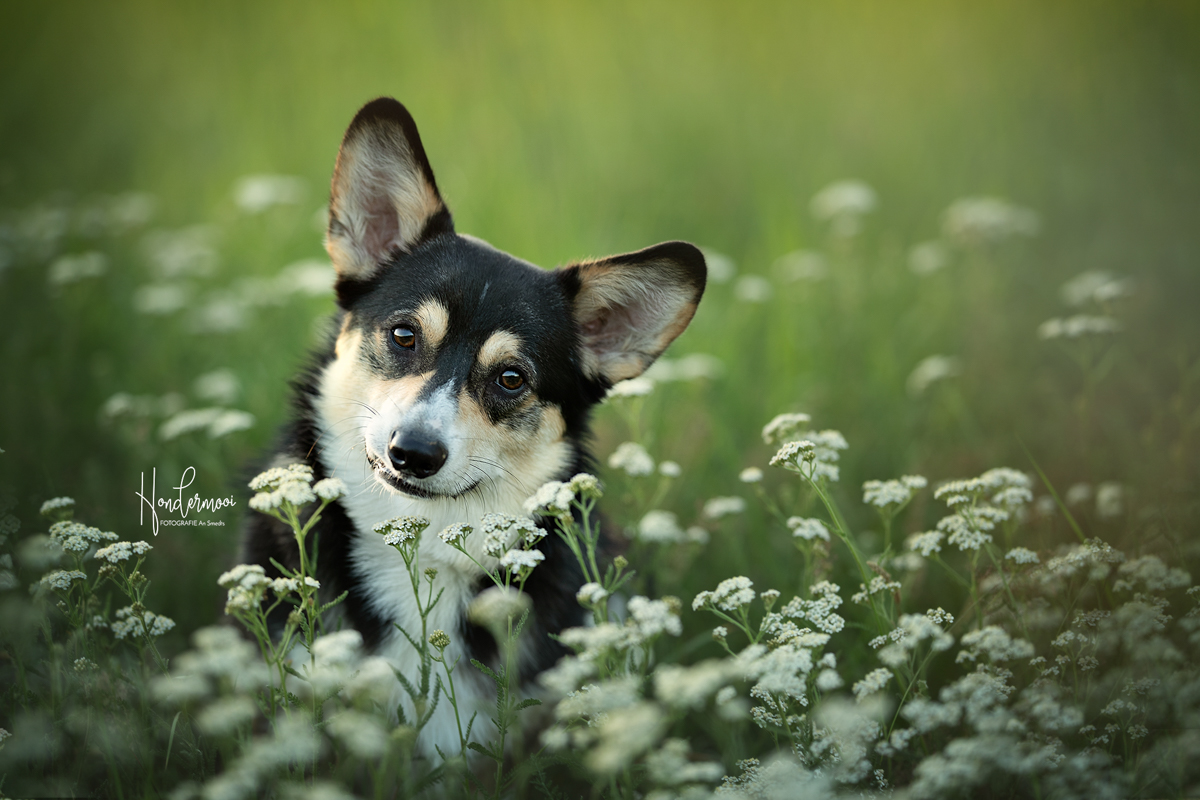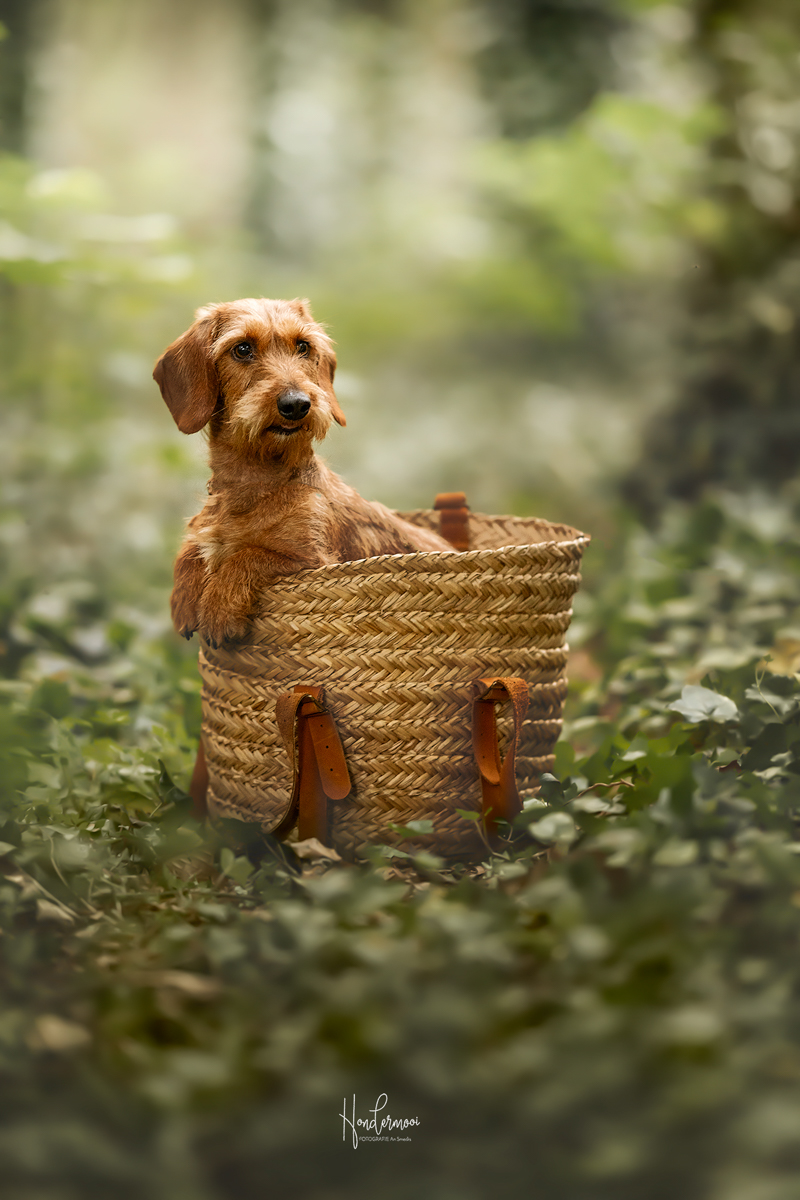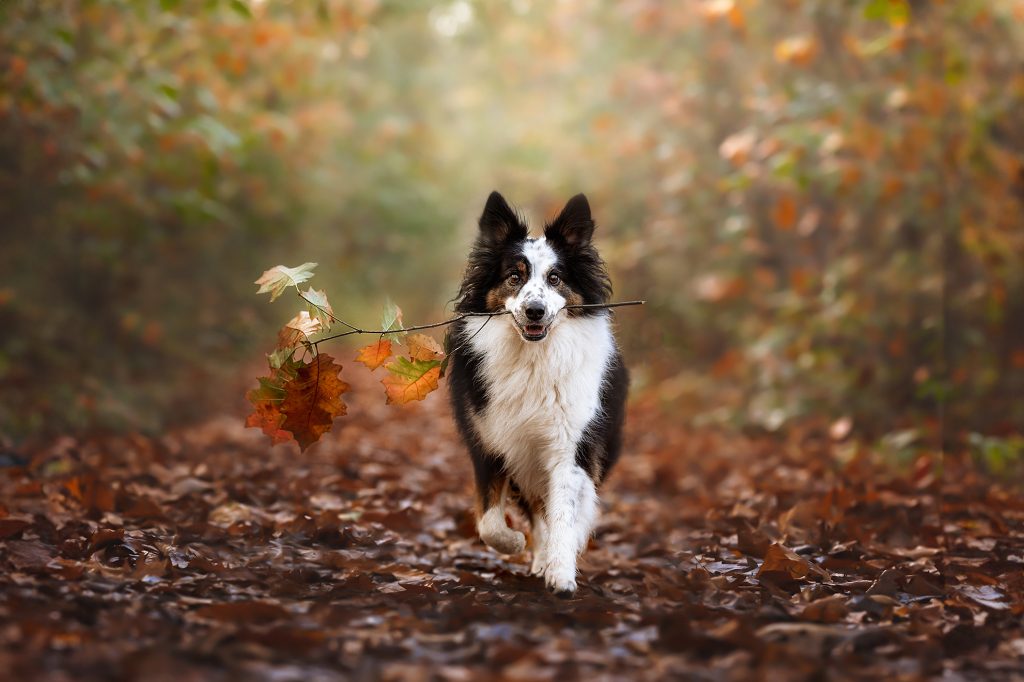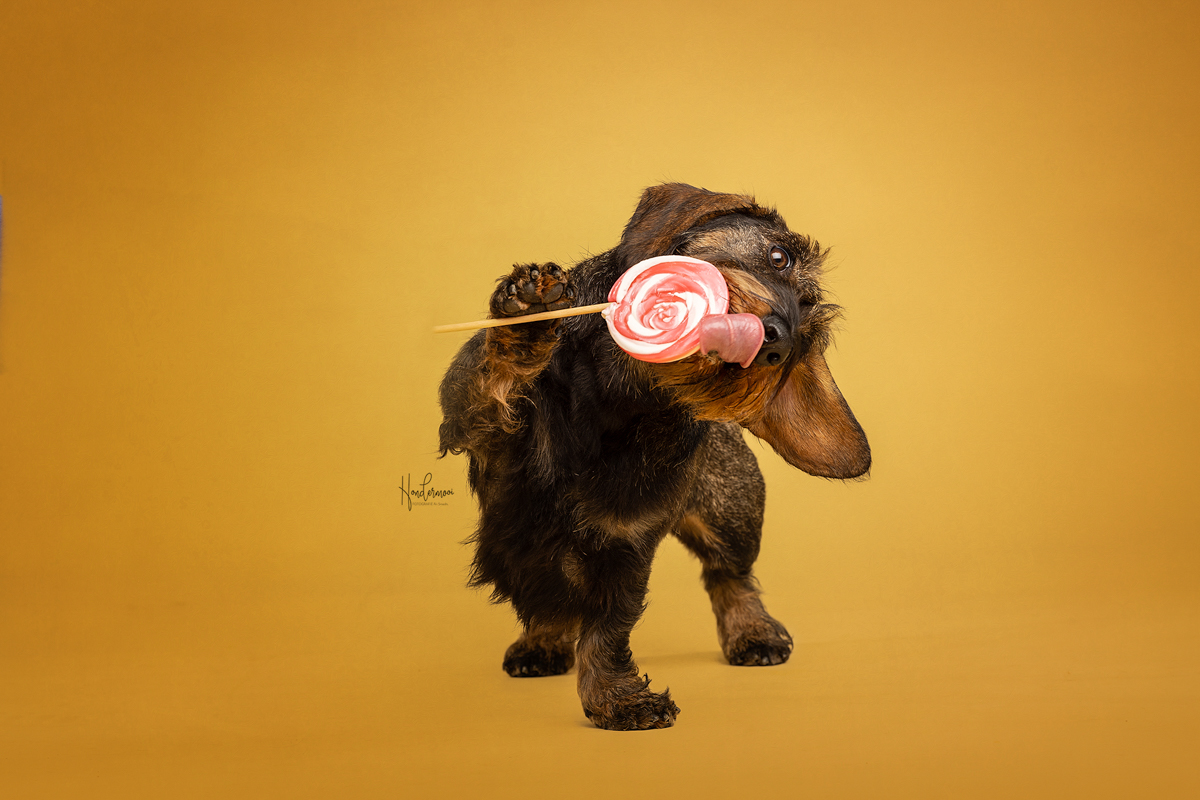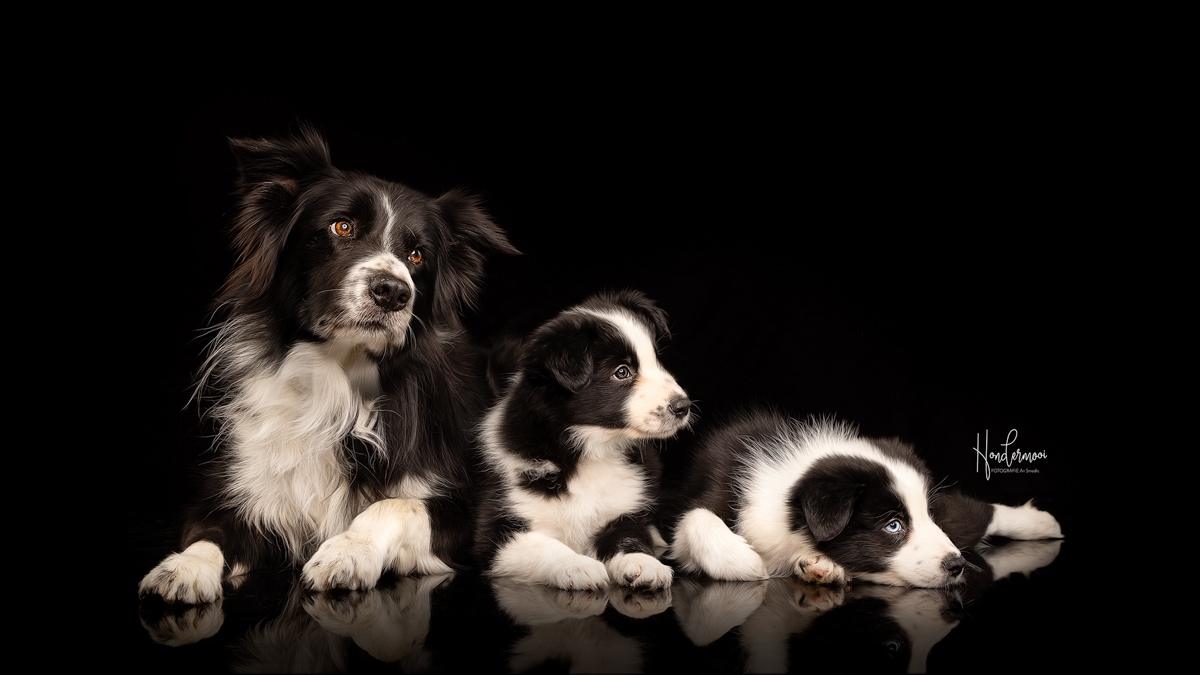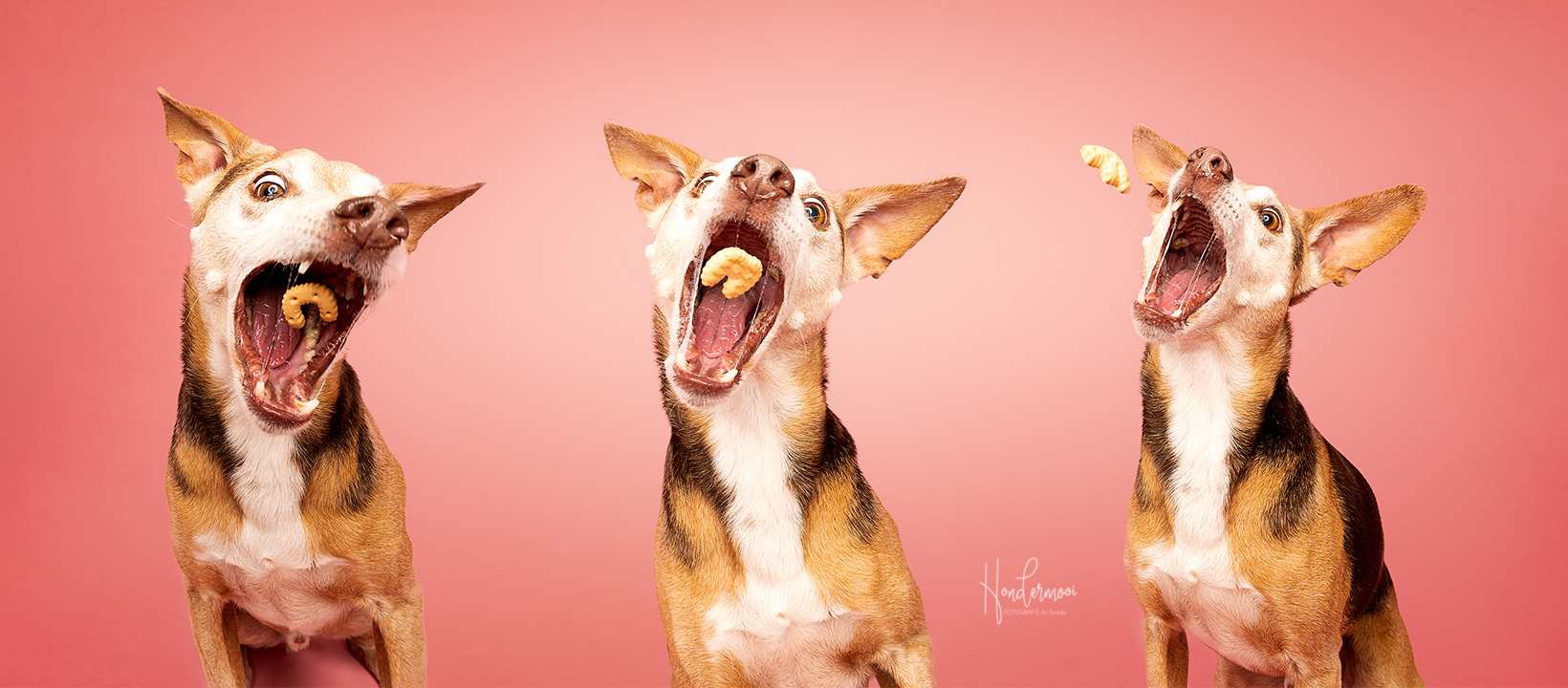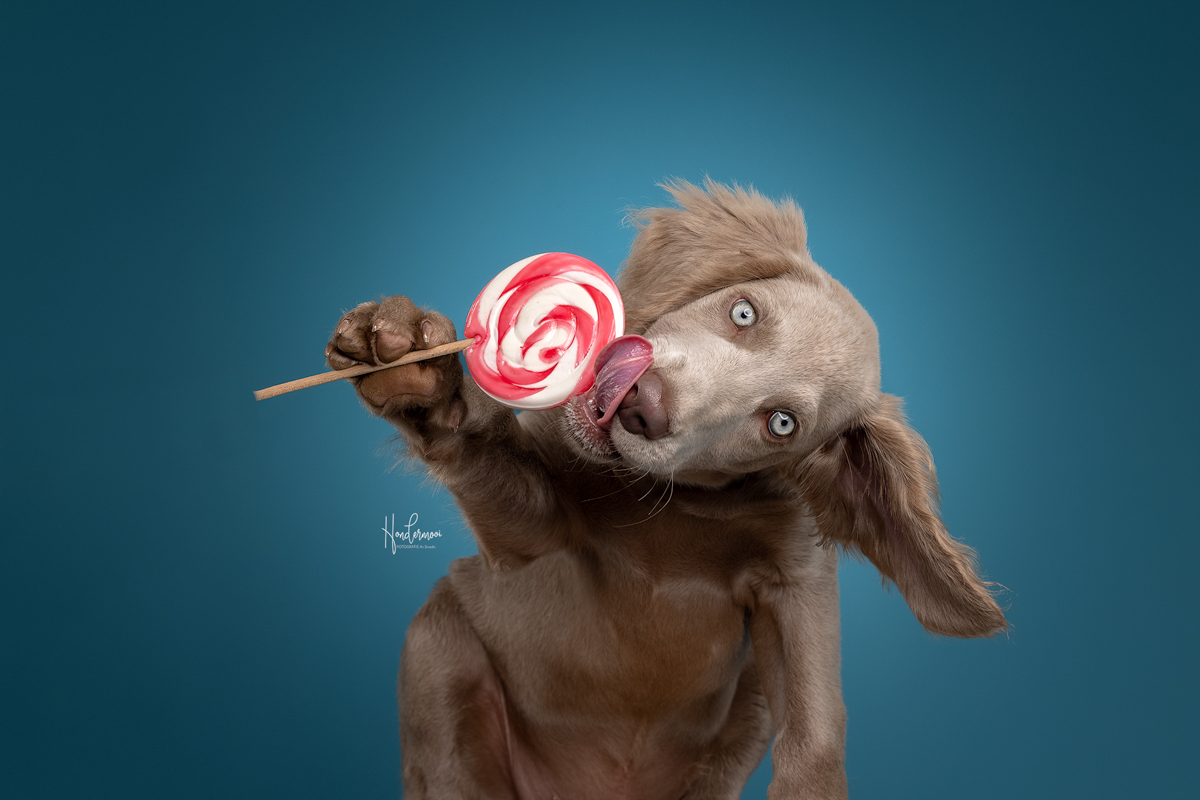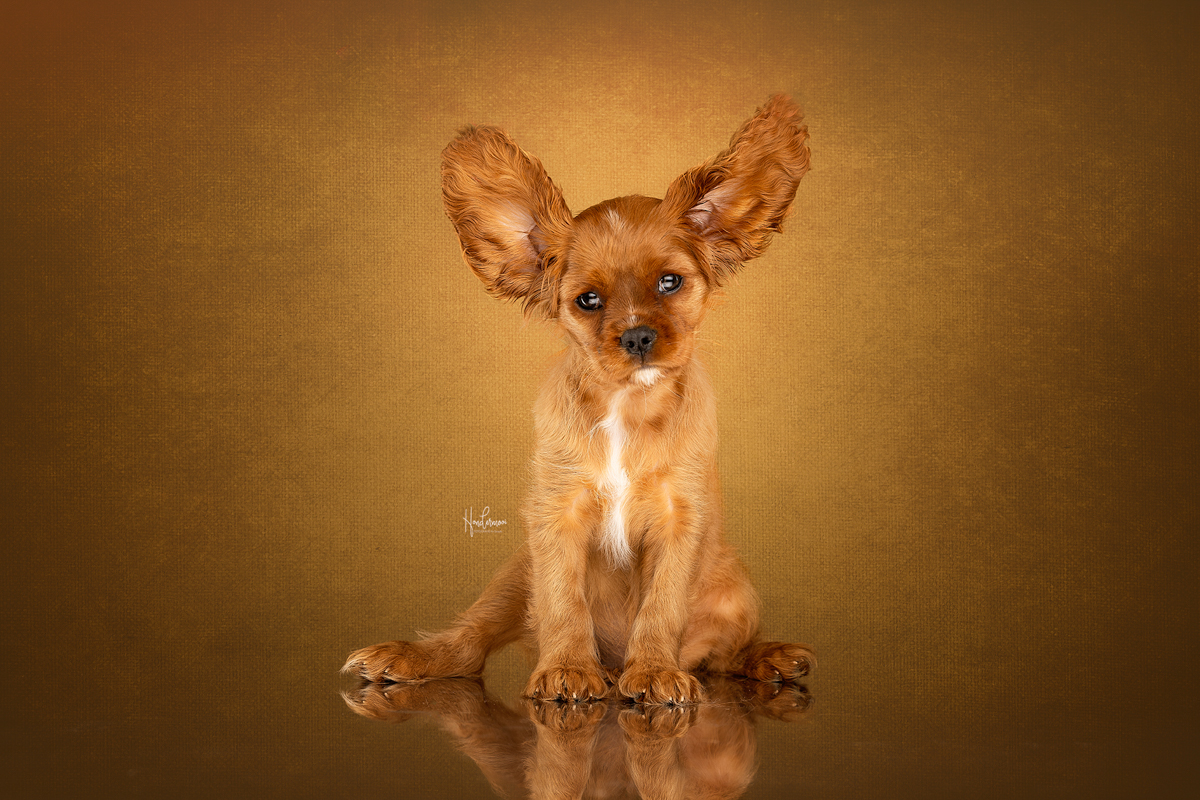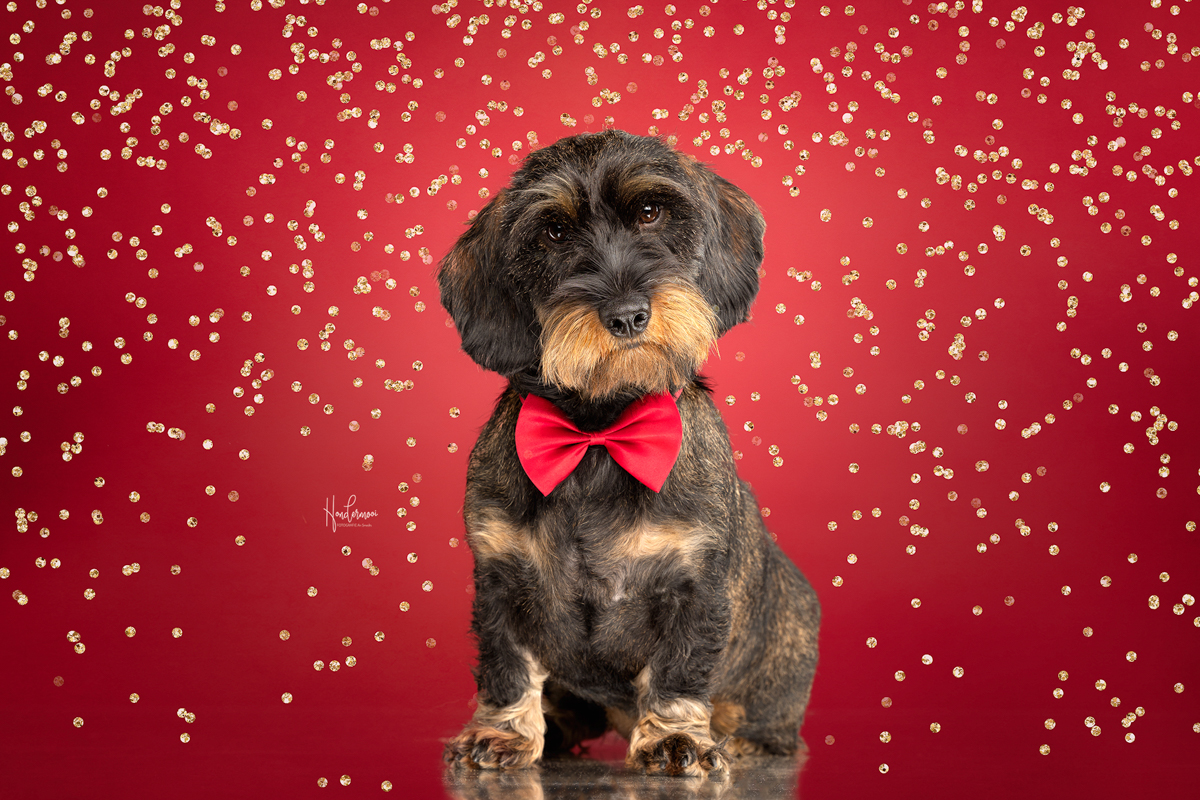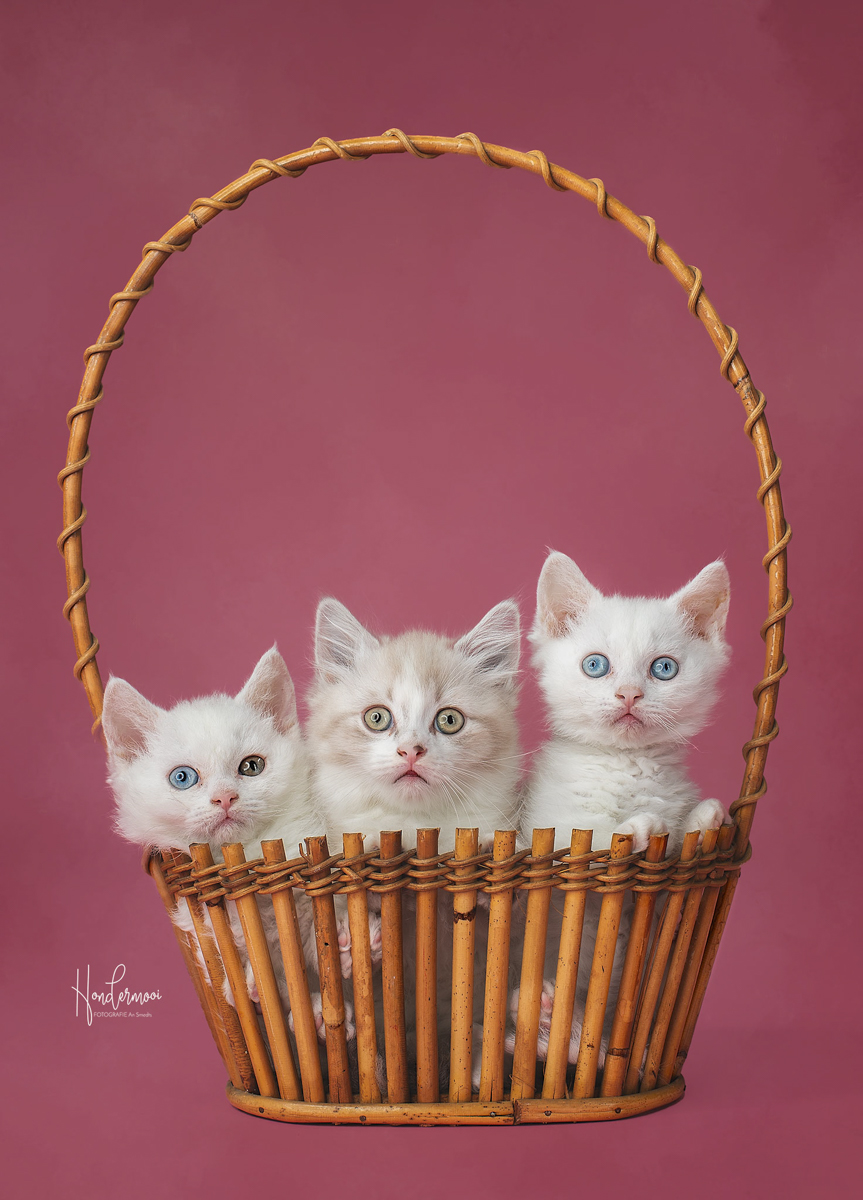Dogs love to run and play during a photoshoot, but capturing this sharply and with quality in your photos can be quite a challenge! In this article, I’d like to share 10 tips for anyone who wants to learn how to photograph dogs in action.
1. Spontaneous yet controlled
An action shot should look spontaneous, but it’s not a good idea to let the dog run wildly and then snap away “on a wing and a prayer.”
Observe the dog carefully during your shoot and try to figure out what action it will enjoy the most. Is the dog a bit older? Then a simple sprint towards the photographer might be quite a challenge! Do you have a real agility champion in front of your lens? Then you can raise the bar a bit higher! Is there a real playful pup in front of your lens? Then go for an action shot including its favorite toy!
If the dog can sit and stay well, you’re lucky; the owner can stand over you and call the dog. However, if the dog is not one to sit still, you’ll need to get a bit more creative. If you don’t have much experience with action photography, it’s helpful to lay a stick on your path for the dog to jump over. This way, you’ll know exactly where the “action” will take place, and with luck, you’ll capture a beautiful flying dog in action right away.

2. Camera settings and lenses
To capture a sharp action shot, you need a fast shutter speed. Typically, 1/1000 sec is sufficient to freeze the action.
I prefer a blurred background in my photos to make the dog stand out. To achieve this, use the widest aperture available to you. For example, if you’re shooting with a 70-200mm lens – a popular choice for action photography – zoom in to 200mm and use an aperture of f/2.8.
The ISO value determines the amount of noise in your photo, and with a high shutter speed, your ISO value can quickly escalate. Therefore, it’s crucial to carefully choose your location when shooting action scenes (see point 7). Ideally, an ISO of 100 is perfect, but you’ll need to adjust according to the lighting conditions.
I shoot with a mirrorless camera (Canon R6 and Canon R5) and use the automatic animal eye autofocus for all my shoots to achieve sharp focus. If you’re using a DSLR or don’t have this function, use a single focus point and focus on the nearest eye.
Switch to continuous autofocus mode to keep the moving dog in focus. This allows the camera to continuously adjust focus as the subject moves.
Finally, utilize burst mode to capture multiple photos rapidly. The number of shots you can take in burst mode depends on your camera. Ensure you have a fast memory card to store all this data without your camera starting to lag; more on this in the point below!
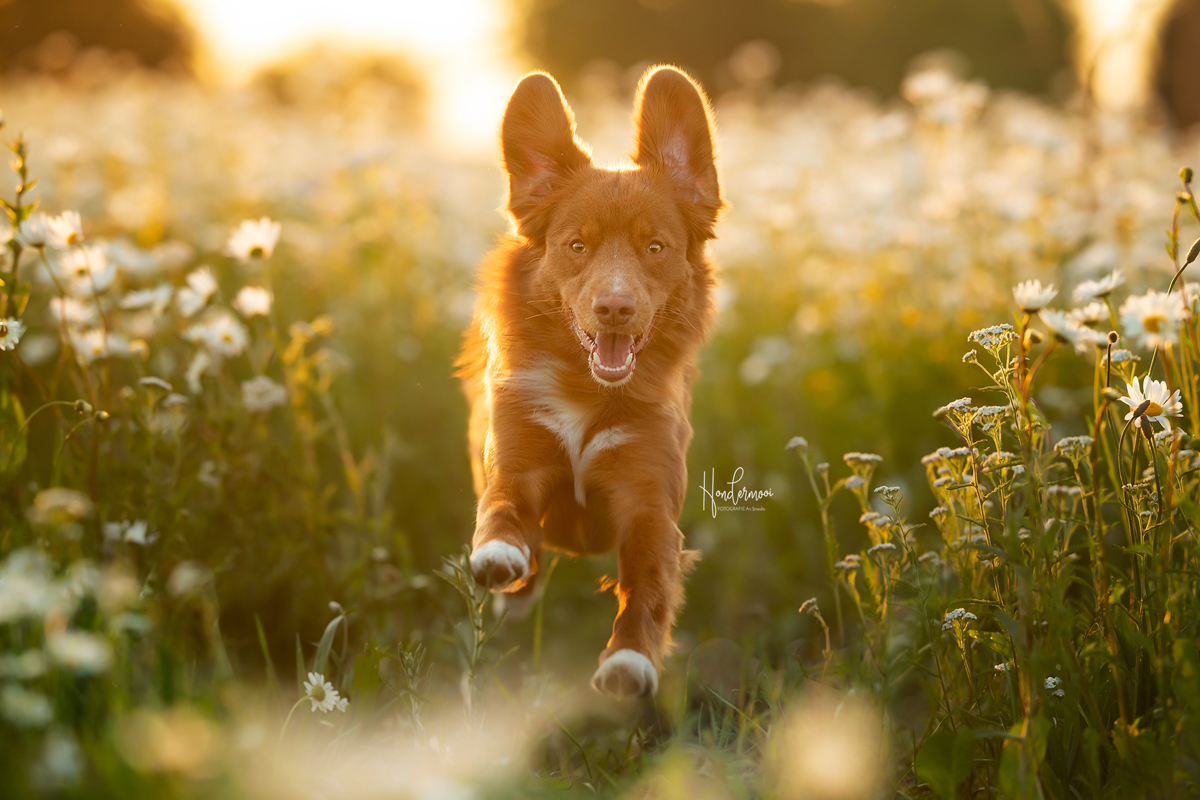
3. Check your memory card!
For photographing dogs in action, it’s important to use a fast memory card. This is often overlooked. You can have a camera that can capture a perfect number of images per second, but if you insert a slow memory card, your camera will quickly lock up because it can’t write the data fast enough.
On a camera’s memory card, you’ll find various symbols and numbers that indicate the card’s specifications and performance. Buy a memory card with sufficient capacity (I personally use a 128GB card) and a high write speed. These are the actual read and write speeds of the card, expressed in megabytes per second (MB/s). I prefer a card with a write speed of 300 megabytes per second.
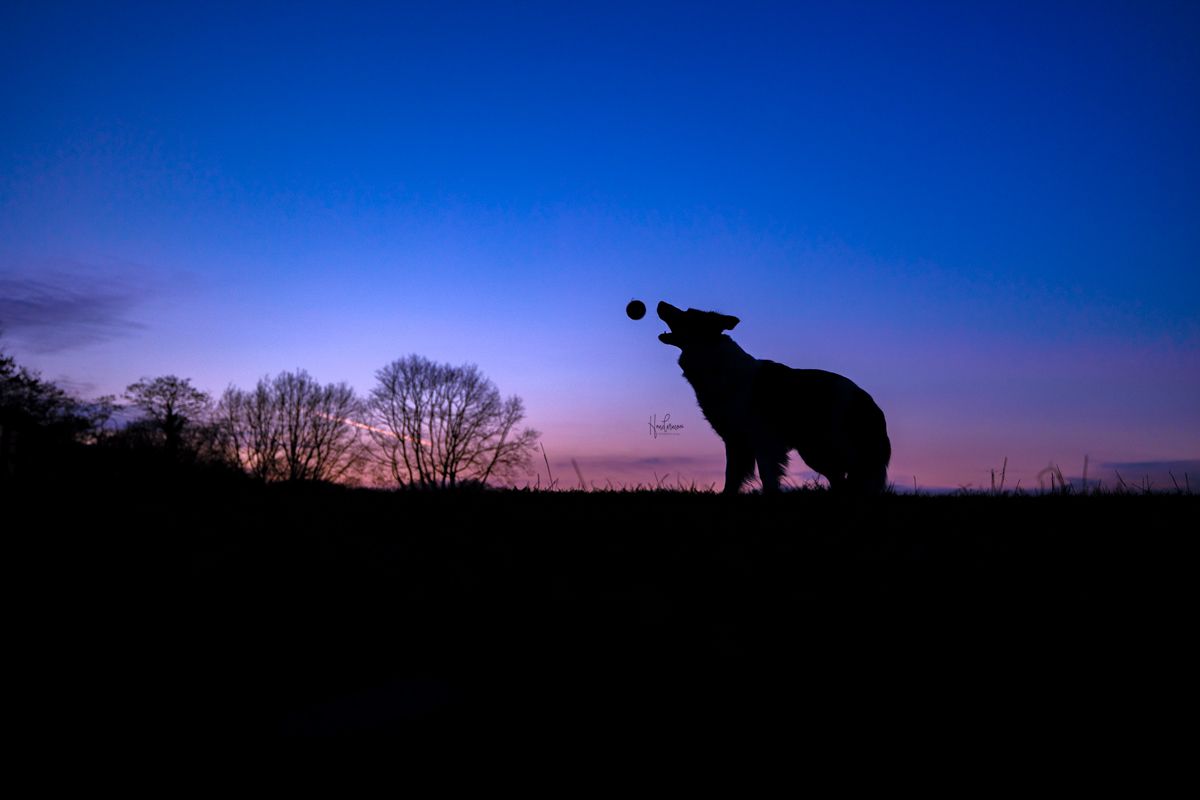
4. Use a toy!
Some dogs go absolutely wild when you bring out their favorite toy, so it’s extra fun to include it in the photos too!
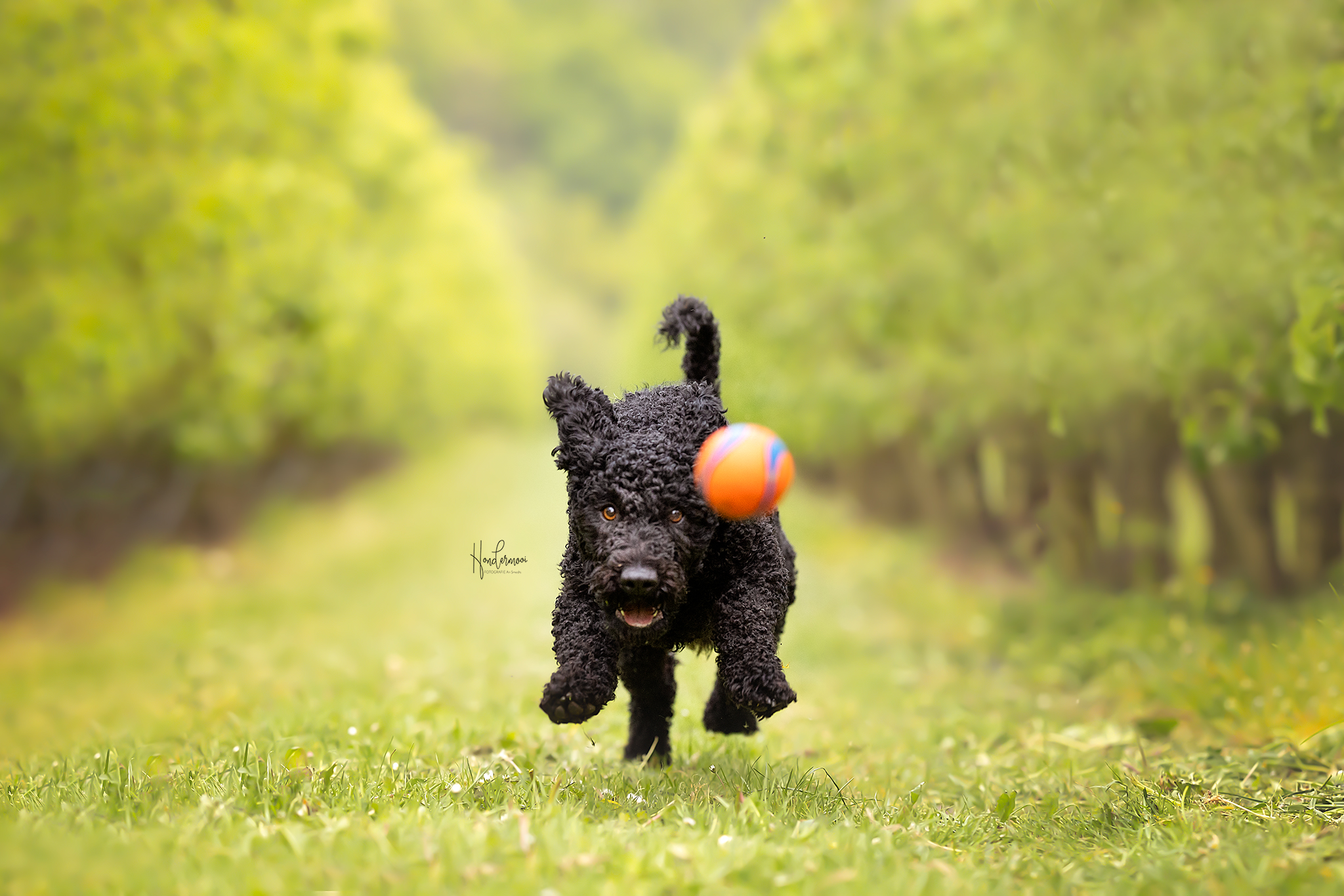
5. Multiple dogs in action
When owners come with multiple dogs, it’s always fun to capture an action shot of them together. However, it’s quite a challenge to get both dogs sharply in focus because they rarely walk in a straight line together.
Opt for a location with a lot of depth, blur your background as much as possible (read in this article how to achieve this), and keep in mind that Photoshop can come to the rescue if they don’t walk neatly side by side!
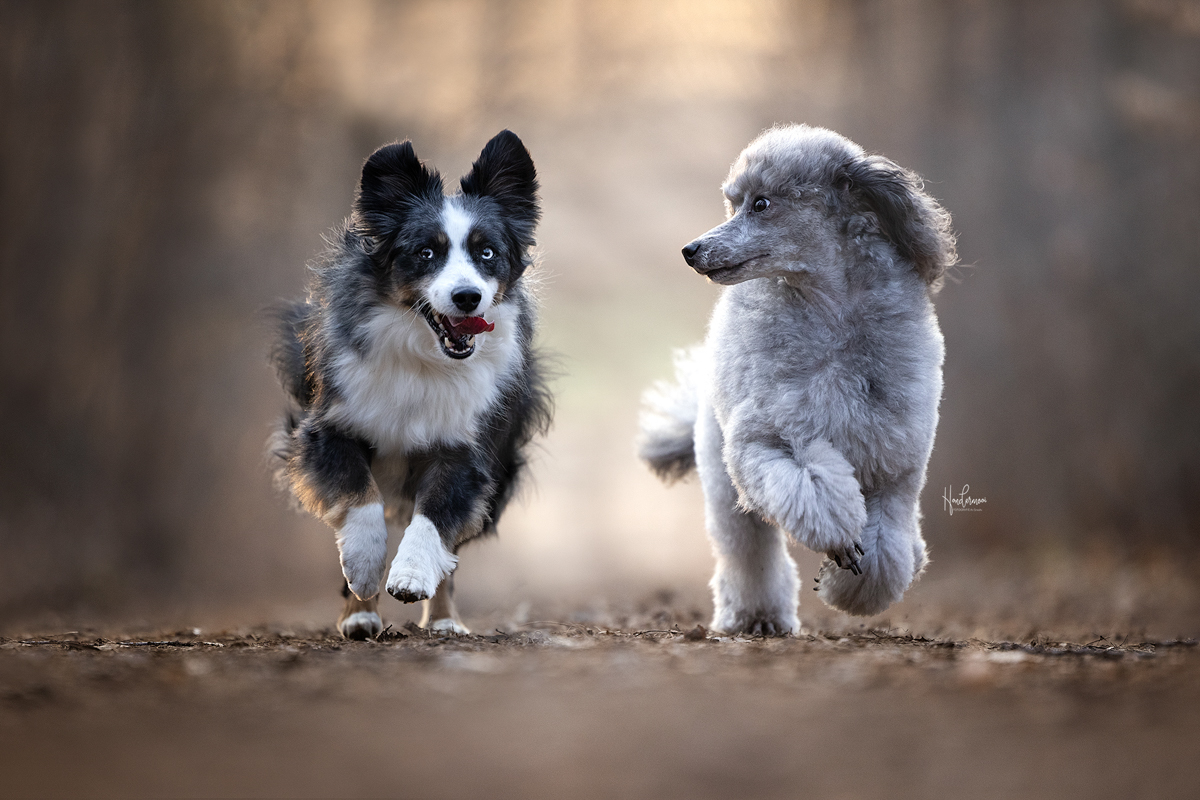
A stick or another toy can be very helpful in keeping your models more or less in the same position while they are still in full action!
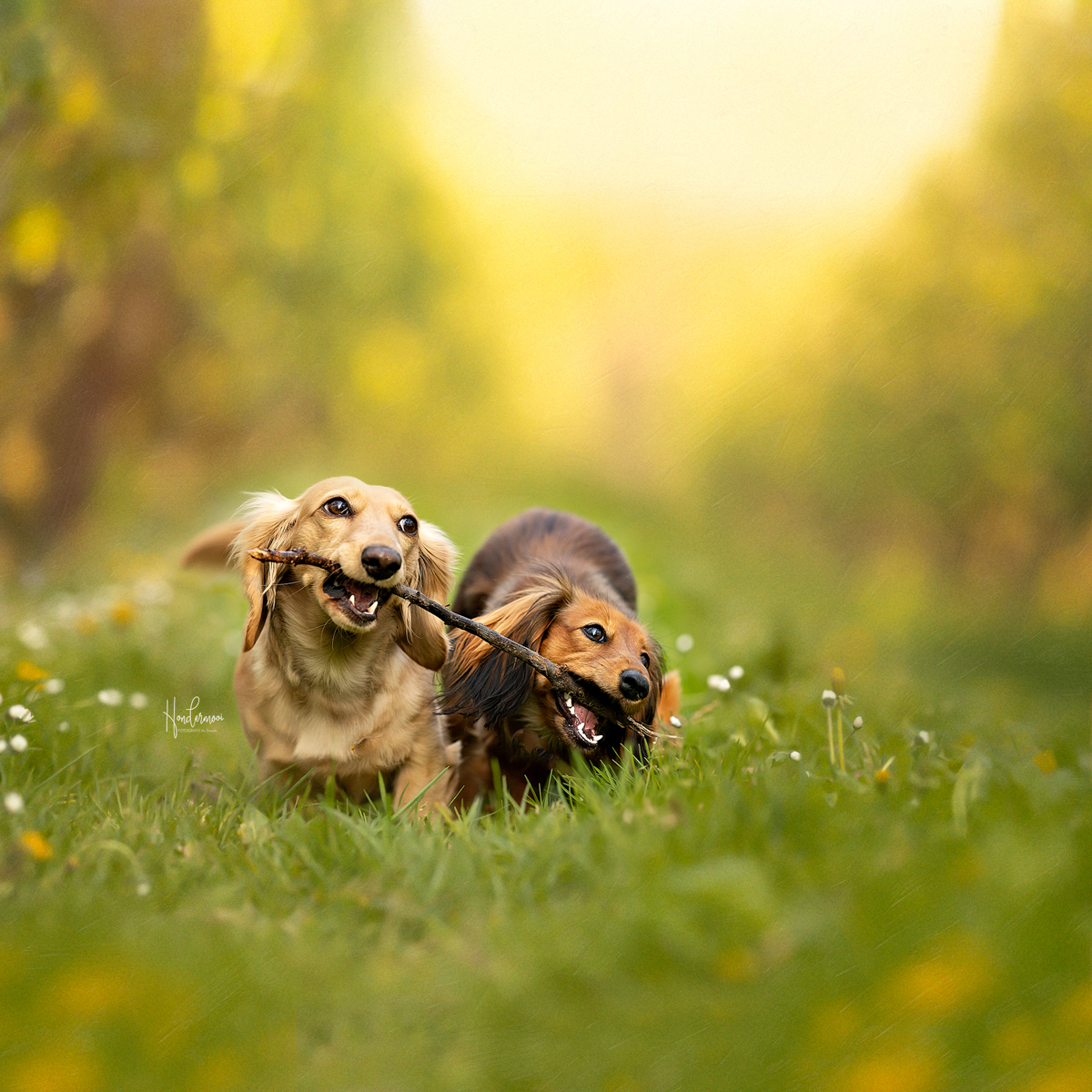
6. Run together!
If you encounter a sporty owner or an enthusiastic child who wants to join in the photo, I always love capturing them running together. With children, this results in delightful spontaneous photos; they stay warm and didn’t expect the photoshoot to be so fun and active!
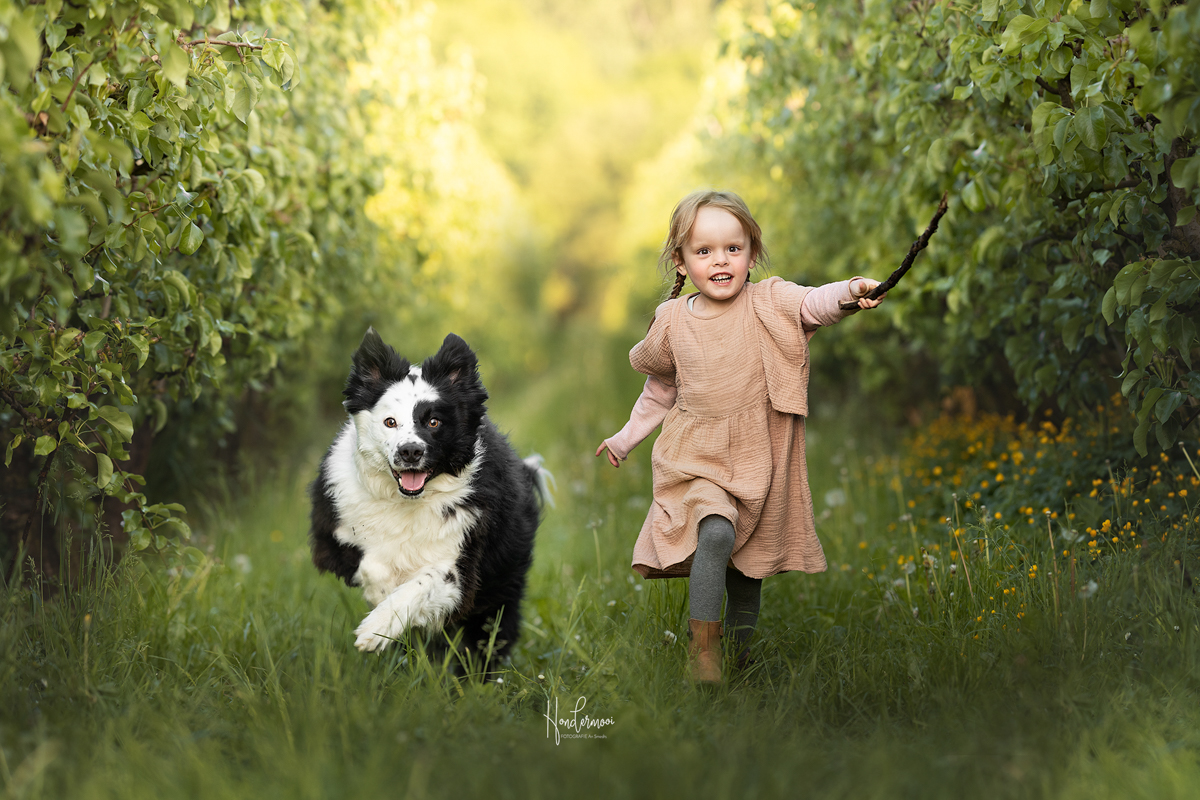
7. Location choice
Since you use a high shutter speed for action photography, the choice of your location is extra important if you want to capture action shots. With a high shutter speed, your ISO can quickly escalate in a dark environment, resulting in low-quality photos with a lot of noise.
An open field is therefore my preference for capturing action shots. Below, the cocker spaniel is running in a potato field. The direction of movement is “under control,” there is enough light to keep your ISO low, and you immediately have an original environment with “flowers” in your photo! An orchard or the winter forest when the trees are bare also lend themselves excellently to action shots.
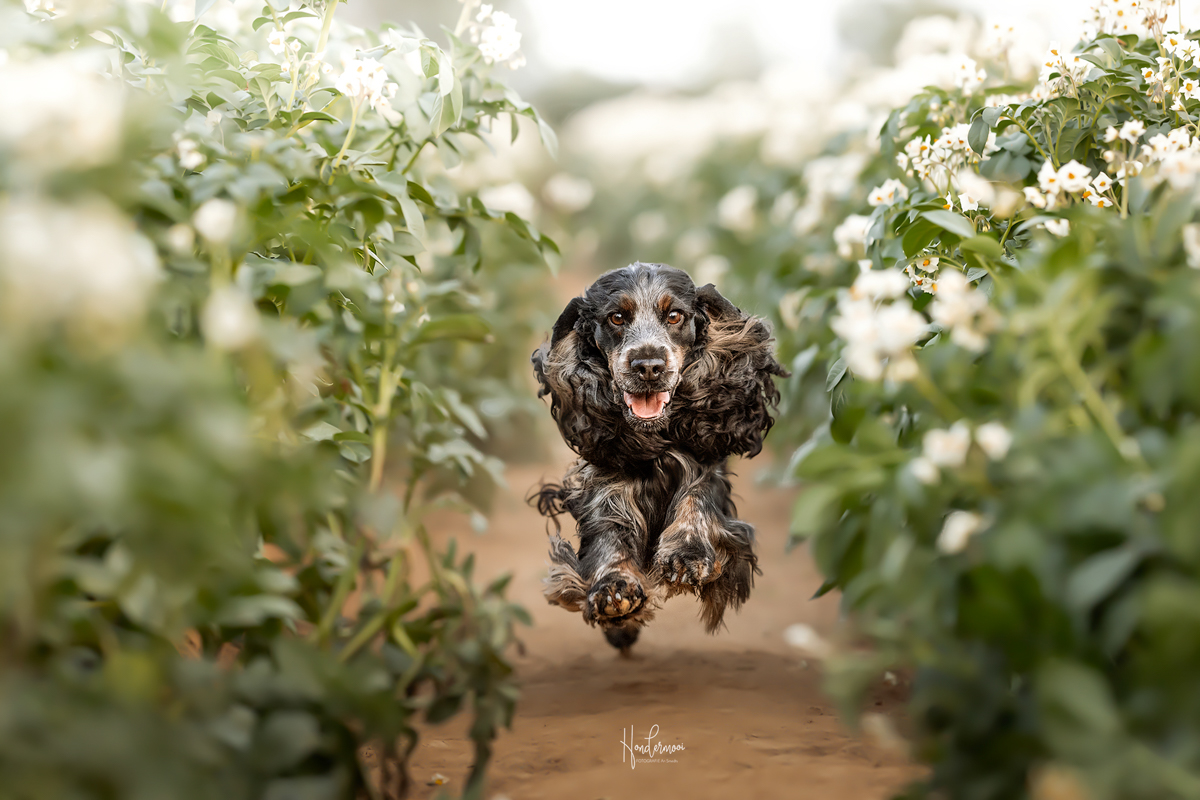
8. Back button focus
You love it or you hate it, but I am already a fan!
Back button focus is an advanced technique in photography where the autofocus function of a camera is decoupled from the shutter button and assigned to a separate button on the back of the camera, often referred to as the AF-ON button.
Normally, the autofocus of a camera is activated when you half-press the shutter button. This means the camera activates both focusing and capturing the image when you press the shutter button. With back button focus, however, autofocus is activated by pressing the AF-ON button on the back of the camera, while the shutter button is only used to actually take the photo.
This has various benefits for photographing dogs in action! By separating autofocus from the shutter button, you have more control over the focusing point. For example, you can focus on a subject and lock the focus by holding down the AF-ON button, allowing you to adjust the composition without changing the focus.
Since autofocus is set before pressing the shutter button, the camera can react faster to changing scenes or moving subjects. This is especially useful for our fast-moving dogs!
Furthermore, you reduce the chance of blurry photos because autofocus isn’t reactivated every time you press the shutter button!
Refer to your camera’s manual for the best setup and give it a try to see if you like it!
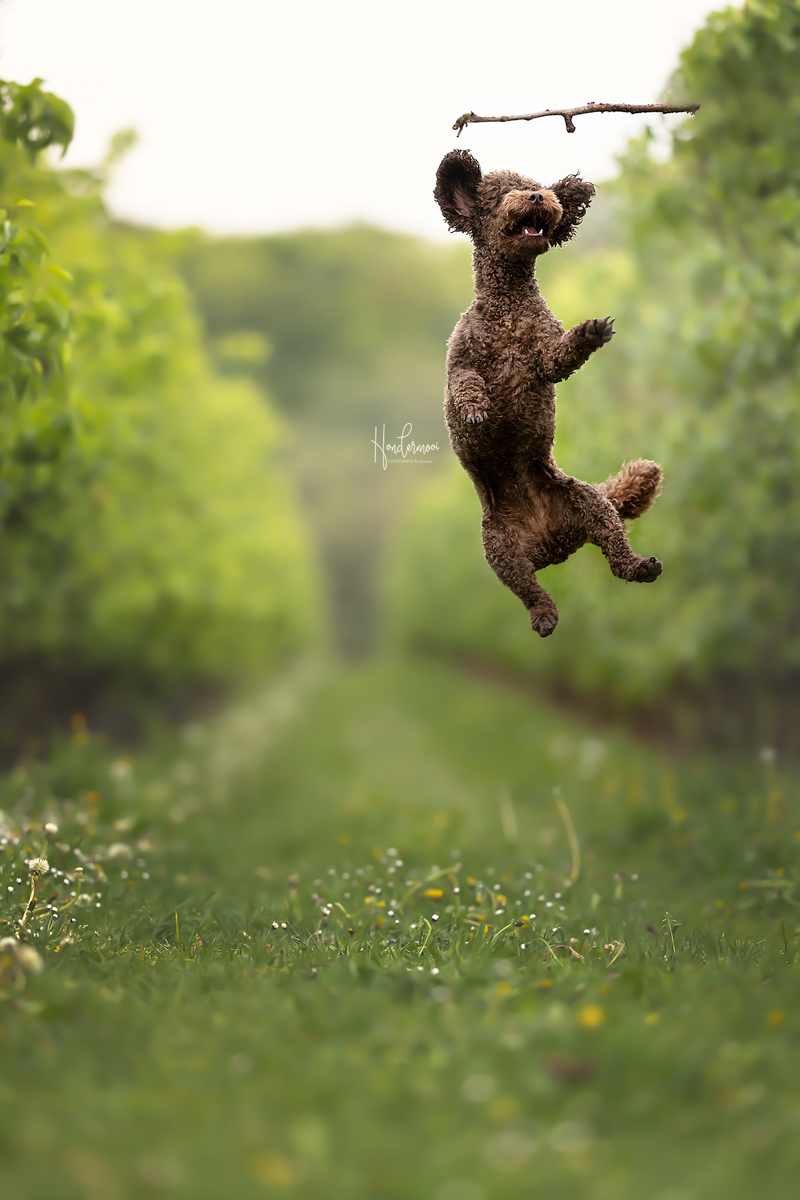
9. Low perspective
Lie down on the ground when taking action photos; this makes the dog really pop in your photo and gives it an imposing presence. Also, try experimenting with a wide-angle lens like in the photo below (taken with the RF 16-35mm) if you want to capture more of the surroundings in your shot.
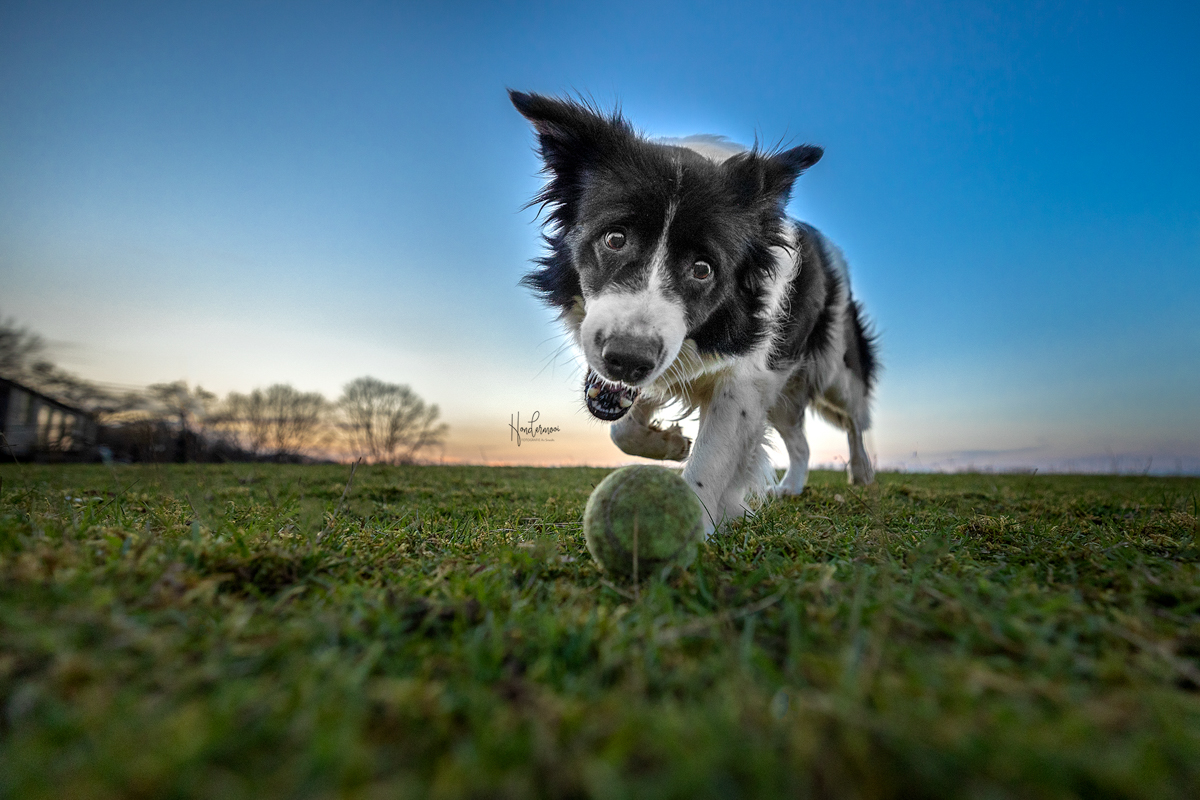
10. Additional tips
- If you also want to take portrait photos during the shoot, start with those first before switching to action shots; otherwise, you might end up with portrait photos with reaaaaaally long tongues and tired looks!
- Always bring enough water for the dog and avoid action shots when temperatures are too high. Winter is the most ideal season for action!
- Ensure a safe environment with minimal distractions and respect the dog’s boundaries if you notice it starting to get tired.
- Try it with a cat too if you want to challenge yourself; they also enjoy a sprint now and then 🙂
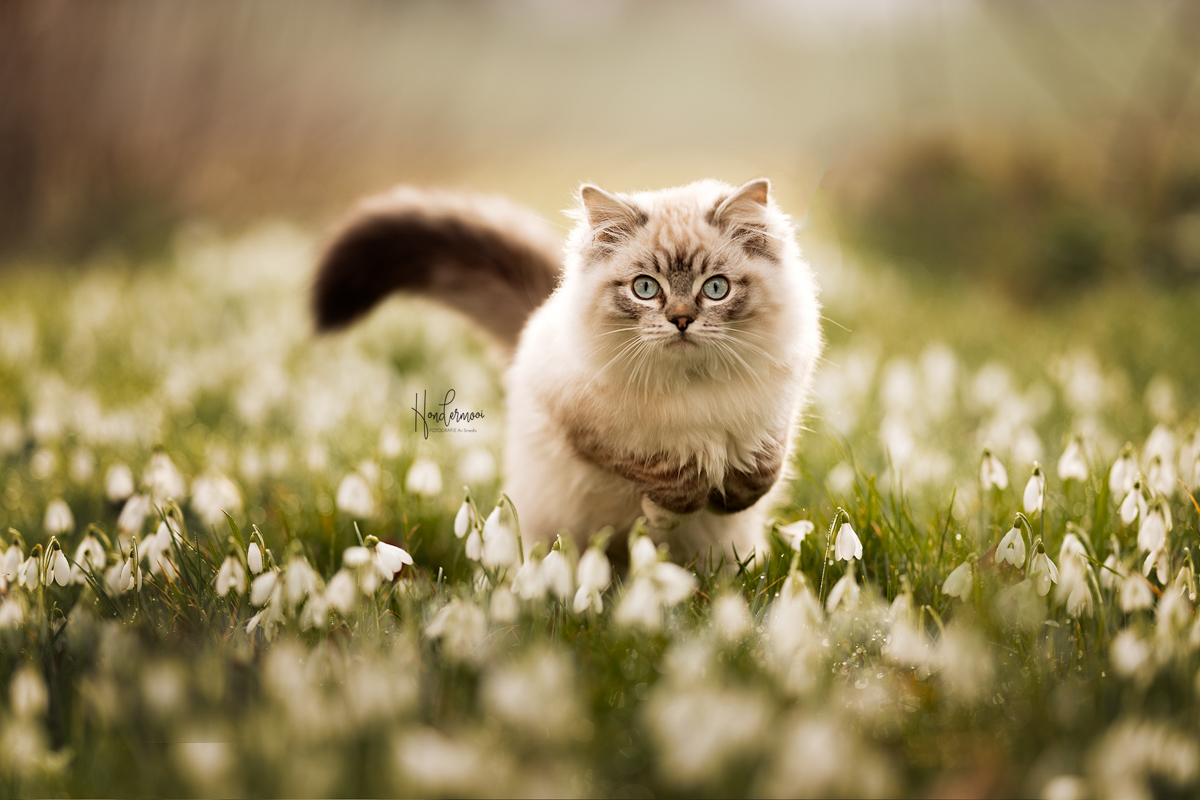
Are you looking to further specialize in dog photography and learn how to capture dogs in an artistic way? Consider attending a workshop on artistic dog photography to boost your skills and take your photography to a new level!
10 tips for photographing dogs in action
10 tips for photographing dogs in action Meer lezen »
